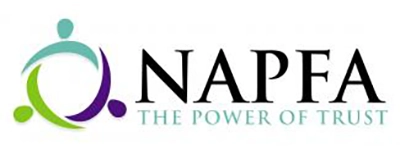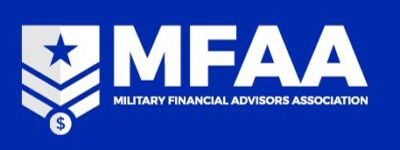Getting Real About College Again Part 2
The College Hangover
Our kids will probably learn about a short-term hangover once or twice during college without our help. The average cost of tuition, fees, books, and room/board for 4-years at a private college after typical discounts is nearly $58K or $232K without any inflation and probably not counting 100% of the true family outlays. Out-of-state and in-state costs are about $48K and $28K, respectively ($192K and $122K for four years). If kiddos have loans for a sizable portion of the bill, the financial hangover can be life-altering.
You may know rough numbers already, but just in case: current average student loan debt amounts for undergraduate, law school, and medical school respectively are $28K, $145K, and $201K (and increasing). Student loan repayment plans usually start at 10 years and many extend to 25 years! The kiddos aren’t 25 years-old and they may be on track to make payments for longer than they’ve been alive.
Recall too that student loan debt isn’t generally bankrupt-able. You can pay it off or die (or hope for loan forgiveness programs, but hope is a lousy strategy!). Public Service Loan Forgiveness (PSLF) may be a possibility, but it still takes 10 years after degree completion, and it limits job choices significantly. Even with income-driven repayment plans, kids with student loan debt won’t have another choice but to be in debt for a large portion of their working career based on decisions set in motion as a teenager.
While I’m very pro-college and its benefits, it’s also true that many students don’t finish college, but student loan debt demands repayment regardless of degree completion. Many other students graduate and then work few if any years before stepping back from the workforce for goals such as raising a family.
Even if a family or student doesn’t take on burdensome debt, dollars spent on college can’t be used for another purpose. If 529 savings, retirement savings, or even current cashflow go towards high college costs, they can’t be used for other students in the family, grandchildren’s education, retirement, or other financial goals
Difficult College Conversations
Most families that I encounter have one of the following attitudes towards funding college for the kiddos:
- “You try to get into the best school you can, we’ll find a way to pay for it.”
- “We had skin in the game and paid some/all of our way, you’ll have to do the same.”
- “We have the GI Bill/College Savings for you, don’t sweat it.”
Less common attitudes are:
- “We have $XXXXX dollars set aside for all the children in the family. We’re not helping you get into debt, and we must peanut butter spread the money across all of the kids, not knowing what their aptitude and trajectory will be, so don’t set your sights on a school that won’t fit into the following budget…”
- “Let’s have you rock your undergrad degree and get into med/law school first, then we can consider loans when you’re on glidepath to earn enough to pay them off.”
- “Pick a school where you can earn enough to pay for your first year. If you succeed having paid your way for a year, we’ll pick up the rest of your undergrad degree.”
- “Let’s see how you do at the state school/junior college for two years. If you get accepted as a transfer at your dream school, we’ll find a way to afford it at half the price.”
Clearly there’s no right answer for every family, but perhaps more important than the parents’ attitude towards college funding is when the conversation takes place. Some kids can get marquee college fever in their early teen years, but most don’t start dreaming of Ivy until their peers start talking about it in Junior year. Having a conversation about college funding is appropriate as early as 9th grade
Better College Conversations
Despite a drop in overall attendance, highly selective schools have become even more selective in the pandemic’s wake as they drown in test score-free applications. If a child is interested in a highly selective school(s), it’s important to get way ahead of the application gauntlet.
If you have the luxury of keeping your kids in the same high school for all 4 years, it may be helpful to see how high school credits earned in middle school can help or hurt the GPA arms race in high school. I.e., starting high school with a 3.0 GPA due to a B earned in an 8th grade high school credit class might not help as much as starting high school with a clean slate but earning 4.5 or 5.0 weighted A’s taken as a more seasoned student.
“You’re not ready for Honors Algebra in 8th grade. Take it in 9th grade after you master pre-algebra without denting your high school GPA from middle school.”
Mapping out AP/AICE/IB classes as well as dual enrollment both for the GPA impact and how potential colleges view those classes is also an important strategy that needs thought prior to 9th grade to have the most effect.
“Bougie University likes to see lots of AP classes, let’s build your schedule around those to boost your GPA and resume.”
Starting PSAT/SAT/ACT prep as early as possible may help avoid the disappointing “sorry you didn’t get in” conversation.
“I don’t care if you’re too cool for Khan Academy, you’ll log 2 hours a week on their free SAT prep program, or I won’t even pay for applications to Bougie University” (this one has been a bust in our home.)
Finally, this article can’t take the place of the many excellent books on the college admissions process that have come out over the past few years such as Who Gets In and Why and Where You Go Is Not Who You’ll Be. Perhaps the best piece of advice we found about preparing a student for highly selective school applications: “Be alike but have a ‘Spike’.”
Being alike implies that all the competitive applicants will have great grades, test scores, and several extracurricular activities. To stand out as the signal among the noise, it’s important to have a feature/talent/expertise/experience that helps the school identify you as a unique complement to the new freshman class. They don’t need 200 soccer team captains, but they may appreciate the kid that rocked academics and ran a business or orchestrated an impactful charity endeavor, etc.
“You love volunteering at the animal shelter, how can we amplify your passion into something with an even greater reach?”
“Let’s find a way to get you to that state university swim camp this summer, I think that maybe what gets you on the podium at the state meet and beyond.”
The college admissions process isn’t going to be a spa day, but it doesn’t have to be a gruesome scene from the Hunger Games either. Proactive planning can pave the way for a focused and realistic final college search senior year.
Cleared to Rejoin
College can be dumbfoundingly expensive, and the juice versus squeeze ratio isn’t always balanced. Before letting kiddos drive the fight by pining for an expensive school, parents should decide on their attitude and plan for funding school and then keep an ongoing dialogue going with the kiddos. It’s worth considering where dollars will have the most impact: undergraduate studies for an uncertain future or graduate studies when the future has clarified a bit? If a highly selective school is a possibility, middle school is the planning window to create a high school resume that will give kiddos a shot.
There’s no right answer that fits every family but waiting until senior year to establish the family’s funding plan and limits is the wrong answer for sure.
Fight’s On!
Winged Wealth Management and Financial Planning LLC (WWMFP) is a registered investment advisor offering advisory services in the State of Florida and in other jurisdictions where exempted. Registration does not imply a certain level of skill or training.
This communication is for informational purposes only and is not intended as tax, accounting or legal advice, as an offer or solicitation of an offer to buy or sell, or as an endorsement of any company, security, fund, or other securities or non-securities offering. This communication should not be relied upon as the sole factor in an investment making decision.
Past performance is no indication of future results. Investment in securities involves significant risk and has the potential for partial or complete loss of funds invested. It should not be assumed that any recommendations made will be profitable or equal the performance noted in this publication.
The information herein is provided “AS IS” and without warranties of any kind either express or implied. To the fullest extent permissible pursuant to applicable laws, Winged Wealth Management and Financial Planning (referred to as “WWMFP”) disclaims all warranties, express or implied, including, but not limited to, implied warranties of merchantability, non-infringement, and suitability for a particular purpose.
All opinions and estimates constitute WWMFP’s judgement as of the date of this communication and are subject to change without notice. WWMFP does not warrant that the information will be free from error. The information should not be relied upon for purposes of transacting securities or other investments. Your use of the information is at your sole risk. Under no circumstances shall WWMFP be liable for any direct, indirect, special or consequential damages that result from the use of, or the inability to use, the information provided herein, even if WWMFP or a WWMFP authorized representative has been advised of the possibility of such damages. Information contained herein should not be considered a solicitation to buy, an offer to sell, or a recommendation of any security in any jurisdiction where such offer, solicitation, or recommendation would be unlawful or unauthorized.






